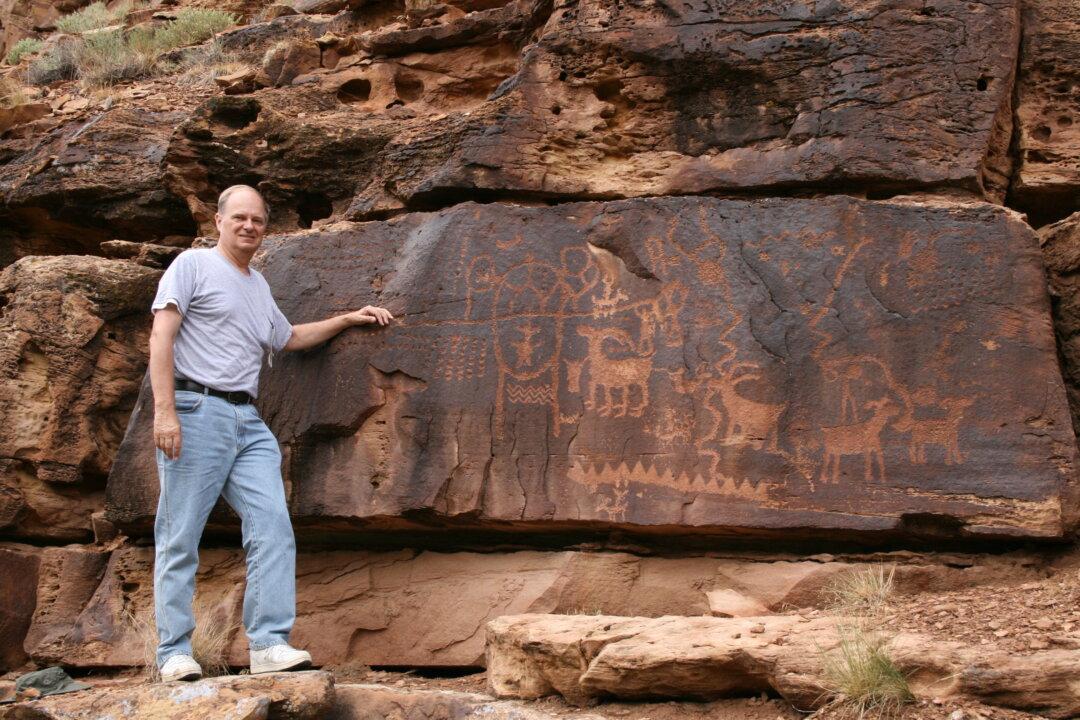Startling findings reported on by Epoch Times earlier this year have gained increasing interest in the worldwide academic community, and more pieces to the puzzle are falling in place.
Petroglyphs found on rock faces in the United States that match ancient Chinese script suggest ancient Chinese expeditions landed in the New World centuries before Christopher Columbus or even the Vikings.
John A. Ruskamp Jr., Ed.D., has led the research on these petroglyphs, which have been found in Arizona, Utah, Nevada, New Mexico, and other parts of the country. The findings could radically change world history. Some experts are excited, others scathingly criticize Ruskamp’s work. This divide often occurs around groundbreaking discoveries.
Scholars in China are taking a particular interest in the petroglyphs, while the Society for American Archaeology dismisses them.
Collaboration With Chinese Scholars
Upon a preliminary analysis of glyphs found on a private ranch in Arizona, Prof. Ma Baochun of Capital Normal University in Beijing has said they could be pre-Qin Dynasty characters, based on the writing style (the Qin Dynasty began in B.C. 221 ). “The form and structure … are close to oracle bones,” he added in an email to Ruskamp.
The oracle-bone style of writing disappeared by royal decree from mankind’s memory around B.C. 1046 , following the fall of the Shang Dynasty. It remained an unknown and totally forgotten form of writing until it was rediscovered in 1899 A.D. at Anyang, China.
Ma’s statements concur with the independent analysis made by David N. Keightley, Ph.D., a MacArthur Foundation Genius Award recipient who is considered by many to be the leading analyst in America of early Chinese oracle-bone writings.





